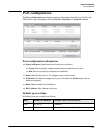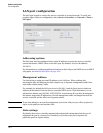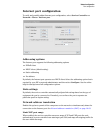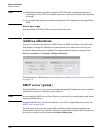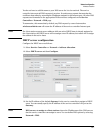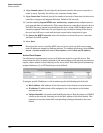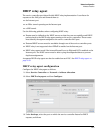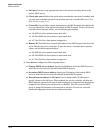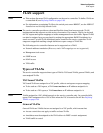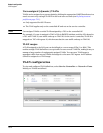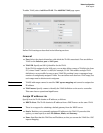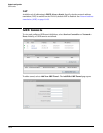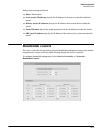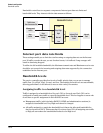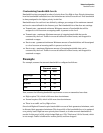
Network configuration
Address allocation
LAN port: Listens to any requests from the local network and relays them to the
remote DHCP server.
Client data tunnel: Select this option when centralized access mode is enabled, and
you only want to handle requests from wireless users on controlled APs. See Client
data tunnel on page 2-10.
Circuit ID: Use this field to attach information to the DHCP request that enables the
server to identify the client station that issued the DHCP request. To have the service
controller insert dynamic values, use the following placeholders:
%S: SSID the client station is associated with.
%B: The BSSID the client station is associated with.
%V: The VLAN the client station is mapped to.
Remote ID: This field lets you attach information to the DHCP request which lets the
server identify the service controller. To have the service controller insert dynamic
values, use the following placeholders:
%S: SSID the client station is associated with.
%B: The BSSID the client station is associated with.
%V: The VLAN the client station is mapped to.
4. Under Server, configure the following parameters:
Primary DHCP server address: Specify the IP address of the first DHCP server to
which the service controller should forward DHCP requests.
Secondary DHCP server address: Specify the IP address of the backup DHCP
server to which the service controller should forward DHCP requests.
Extend Internet subnet to LAN port: Used to assign public IP addresses to
specific clients on the LAN port. When enabled, the service controller will alter the
DHCP address requests from users so that they appear to originate from the network
assigned to the Internet port on the service controller. This will cause the DHCP
server to assign IP addresses on this network to all users. The service controller
handles all mapping between the two subnets internally.
10-10




